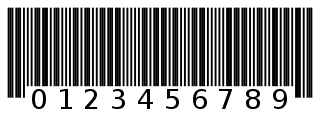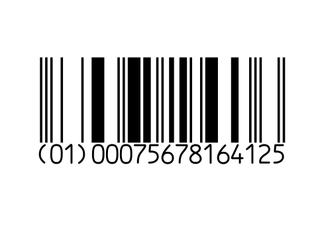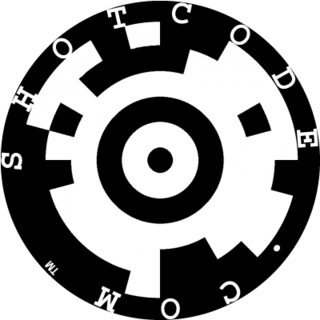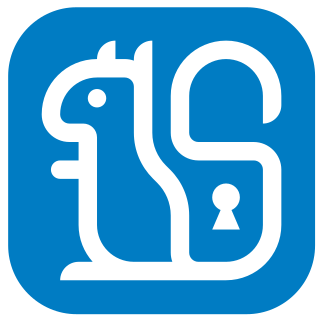 W
WA barcode or bar code is a method of representing data in a visual, machine-readable form. Initially, barcodes represented data by varying the widths and spacings of parallel lines. These barcodes, now commonly referred to as linear or one-dimensional (1D), can be scanned by special optical scanners, called barcode readers. Later, two-dimensional (2D) variants were developed, using rectangles, dots, hexagons and other geometric patterns, called matrix codes or 2D barcodes, although they do not use bars as such. 2D barcodes can be read or deconstructed using application software on mobile devices with inbuilt cameras, such as smartphones.
 W
WAutocoding refers to software solutions that help manufacturers, particularly those in the food industry, ensure that products have the correct packaging and correct 'sell by' date codes, thereby reducing the number of Emergency Product Withdrawals (EPW). The term was first used during an initiative between Geest PLC and Tesco PLC in 2001.
 W
WAztec Code is a type of 2D barcode invented by Andrew Longacre, Jr. and Robert Hussey in 1995. The code was published by AIM, Inc. in 1997. Although the Aztec code was patented, that patent was officially made public domain. The aztec code is also published as ISO/IEC 24778:2008 standard. Named after the resemblance of the central finder pattern to an Aztec pyramid, Aztec code has the potential to use less space than other matrix barcodes because it does not require a surrounding blank "quiet zone".
 W
WBar code medication administration (BCMA) is a bar code system designed by Glenna Sue Kinnick to prevent medication errors in healthcare settings and to improve the quality and safety of medication administration. The overall goals of BCMA are to improve accuracy, prevent errors, and generate online records of medication administration.
 W
WA barcode reader is an optical scanner that can read printed barcodes, decode the data contained in the barcode and send the data to a computer. Like a flatbed scanner, it consists of a light source, a lens and a light sensor translating for optical impulses into electrical signals. Additionally, nearly all barcode readers contain decoder circuitry that can analyze the barcode's image data provided by the sensor and sending the barcode's content to the scanner's output port.
 W
WThe application Barcode Scanner is an Android app, from the open-source project ZXing, that allows an Android device with imaging hardware to scan barcodes or 2-D 2D graphical barcodes and retrieve the data encoded. Information encoded often includes web addresses, geographical coordinates, and small pieces of text, in addition to commercial product codes. This Android-based system has similar functionality to a hardware barcode reader.
 W
WA barcode system is a network of hardware and software, consisting primarily of mobile computers, printers, handheld scanners, infrastructure, and supporting software. Barcode systems are used to automate data collection where hand recording is neither timely or cost effective. Barcoding systems are not radio-frequency identification (RFID) systems even though the companies that provide barcode equipment will often also provide RFID equipment and many companies use both technologies as part of larger resource management systems.
 W
WCodablock is a family of stacked 1D barcodes which was invented in Identcode Systeme GmbH in Germany in 1989 by Heinrich Oehlmann. Codablock barcodes are based on stacked Code 39 and Code 128 symbologies and have some advantages of 2D barcodes.
 W
WCode 11 is a barcode symbology developed by Intermec in 1977. It is used primarily in telecommunications. The symbol can encode any length string consisting of the digits 0–9 and the dash character (-). A twelfth code represents the start/stop character, commonly printed as "*". One or two modulo-11 check digit(s) can be included.
 W
WCode 39 is a variable length, discrete barcode symbology.
 W
WCode 93 is a barcode symbology designed in 1982 by Intermec to provide a higher density and data security enhancement to Code 39. It is an alphanumeric, variable length symbology. Code 93 is used primarily by Canada Post to encode supplementary delivery information. Every symbol includes two check characters.
 W
WCode 128 is a high-density linear barcode symbology defined in ISO/IEC 15417:2007. It is used for alphanumeric or numeric-only barcodes. It can encode all 128 characters of ASCII and, by use of an extension symbol (FNC4), the Latin-1 characters defined in ISO/IEC 8859-1.. It generally results in more compact barcodes compared to other methods like Code 39, especially when the texts contain mostly digits.
 W
WA Data Matrix is a two-dimensional code consisting of black and white "dots" or dots arranged in either a square or rectangular pattern, also known as a matrix. The information to be encoded can be text or numeric data. Usual data size is from a few bytes up to 1556 bytes. The length of the encoded data depends on the number of cells in the matrix. Error correction codes are often used to increase reliability: even if 15 or more cells are damaged it is unreadable, the message can still be read. A Data Matrix symbol can store up to 2,335 alphanumeric letters.
 W
WDNA barcoding is a method of species identification using a short section of DNA from a specific gene or genes. The premise of DNA barcoding is that, by comparison with a reference library of such DNA sections, an individual sequence can be used to uniquely identify an organism to species, in the same way that a supermarket scanner uses the familiar black stripes of the UPC barcode to identify an item in its stock against its reference database. These "barcodes" are sometimes used in an effort to identify unknown species, parts of an organism, or simply to catalog as many taxa as possible, or to compare with traditional taxonomy in an effort to determine species boundaries.
 W
WAn EAN-8 is an EAN/UPC symbology barcode and is derived from the longer International Article Number (EAN-13) code. It was introduced for use on small packages where an EAN-13 barcode would be too large; for example on cigarettes, pencils, and chewing gum packets. It is encoded identically to the 12 digits of the UPC-A barcode, except that it has 4 digits in each of the left and right halves.
 W
WThe EAN-2 is a supplement to the EAN-13 and UPC-A barcodes. It is often used on magazines and periodicals to indicate an issue number.
 W
WThe EAN-5 is a 5-digit European Article Number code, and is a supplement to the EAN-13 barcode used on books. It is used to give a suggestion for the price of the book.
 W
WThe Facing Identification Mark, or FIM, is a bar code designed by the United States Postal Service to assist in the automated processing of mail. The FIM is a set of vertical bars printed on the envelope or postcard near the upper edge, just to the left of the postage area. The FIM is intended for use primarily on preprinted envelopes and postcards and is applied by the company printing the envelopes or postcards, not by the USPS.
 W
WThe GS1 GEPIR is a distributed database that contains basic information on over 1,000,000 companies in over 100 countries. The database can be searched by GTIN code, container Code (SSCC), location number (GLN), and the company name. A SOAP webservice exists.
 W
WGS1 DataBar is a family of symbols most commonly seen in the GS1 DataBar Coupon. Formerly known as Reduced Space Symbology (RSS-14), this family of barcodes include:Symbols intended for retail point of sale scanning: GS1 DataBar Omnidirectional GS1 DataBar Stacked Omnidirectional GS1 DataBar Expanded GS1 DataBar Expanded Stacked Symbols that are not intended for retail Point-of-Sale scanning: GS1 DataBar Truncated GS1 DataBar Limited GS1 DataBar Stacked
 W
WThe GS1 Databar Coupon code has been in use in retail industry since the mid-1980s. At first, it was a UPC with system ID 5. Since UPCs cannot hold more than 12 digits, it required another bar code to hold additional information like offer code, expiration date and household ID numbers. Therefore, the code was often extended with an additional UCC/EAN 128 bar code. EAN 13 was sometimes used instead of UPC, and because it starts with 99, it was called the EAN 99 coupon barcode, and subsequently GS1 DataBar. After more than 20 years in use, there is now a need to encode more data for complex coupons, and to accommodate longer company IDs, so the traditional coupon code has become less efficient and sometimes not usable at all.
 W
WGS1-128 is an application standard of the GS1 implementation using the Code 128 barcode specification. The former correct name was UCC/EAN-128. Other no longer used names have included UCC-128 and EAN-128. The GS1-128 standard was introduced in 1989 and uses a series of Application Identifiers to include additional data such as best before dates, batch numbers, quantities, weights and many other attributes needed by the user.
 W
WHigh Capacity Color Barcode (HCCB) is a technology developed by Microsoft for encoding data in a 2D "barcode" using clusters of colored triangles instead of the square pixels conventionally associated with 2D barcodes or QR codes. Data density is increased by using a palette of 4 or 8 colors for the triangles, although HCCB also permits the use of black and white when necessary. It has been licensed by the ISAN International Agency for use in its International Standard Audiovisual Number standard, and serves as the basis for the Microsoft Tag mobile tagging application.
 W
WThe Intelligent Mail Barcode is a 65-bar barcode for use on mail in the United States. The term "Intelligent Mail" refers to services offered by the United States Postal Service for domestic mail delivery. The IM barcode is intended to provide greater information and functionality than its predecessors POSTNET and PLANET. An Intelligent Mail barcode has also been referred to as a One Code Solution and a 4-State Customer Barcode, abbreviated 4CB, 4-CB or USPS4CB. The complete specification can be found in USPS Document USPS-B-3200. It effectively incorporates the routing ZIP code and tracking information included in previously used postal barcode standards.
 W
WInterleaved 2 of 5 (ITF) is a continuous two-width barcode symbology encoding digits. It is used commercially on 135 film, for ITF-14 barcodes, and on cartons of some products, while the products inside are labeled with UPC or EAN.
 W
WThe International Article Number is a standard describing a barcode symbology and numbering system used in global trade to identify a specific retail product type, in a specific packaging configuration, from a specific manufacturer. The standard has been subsumed in the Global Trade Item Number standard from the GS1 organization; the same numbers can be referred to as GTINs and can be encoded in other barcode symbologies defined by GS1. EAN barcodes are used worldwide for lookup at retail point of sale, but can also be used as numbers for other purposes such as wholesale ordering or accounting. These barcodes only represent the digits 0–9, unlike some other barcode symbologies which can represent additional characters.
 W
WITF-6 is the implementation of an Interleaved 2 of 5 (ITF) barcode to encode a addon to ITF-14 and ITF-16 barcodes. Originally was developed as a part of JIS specification for Physical Distribution Center. Instead of ITF-14, it wasn’t standardized by ISO Committee but it is widely used to encode additional data to Global Trade Item Number such as items quantity or container weight.
 W
WGeorge Joseph Laurer III was an North-American engineer for IBM at Research Triangle Park in North Carolina. He published 20 bulletins, held 28 patents and developed the Universal Product Code (UPC) in the early 1970s. He devised the coding and pattern used for the UPC, based on Joe Woodland's more general idea for barcodes.
 W
WMatrix 2 of 5 is a variable length, discrete, two width symbology. Matrix 2 of 5 is a subset of two-out-of-five codes. Unlike Industrial 2 of 5 code, Matrix 2 of 5 can encode data not only with black bars but with white spaces.
 W
WMaxiCode is a public domain, machine-readable symbol system originally created and used by United Parcel Service. Suitable for tracking and managing the shipment of packages, it resembles a barcode, but uses dots arranged in a hexagonal grid instead of bars. MaxiCode has been standardised under ISO/IEC 16023.
 W
WMeCard is a data file similar to vCard but used by NTT DoCoMo in Japan in QR code format for use with Cellular Phones.
 W
WMSI is a barcode symbology developed by the MSI Data Corporation, based on the original Plessey Code symbology. It is a continuous symbology that is not self-checking. MSI is used primarily for inventory control, marking storage containers and shelves in warehouse environments.
 W
WPDF417 is a stacked linear barcode format used in a variety of applications such as transport, identification cards, and inventory management. "PDF" stands for Portable Data File. The "417" signifies that each pattern in the code consists of 4 bars and spaces in a pattern that is 17 units (modules) long. The PDF417 symbology was invented by Ynjiun P. Wang at Symbol Technologies in 1991. It is defined in ISO standard 15438.
 W
WPostBar, also known as CPC 4-State, is the black-ink barcode system used by Canada Post in its automated mail sorting and delivery operations. It is similar to other 4 State barcode systems used by Australia Post and the United Kingdom's Royal Mail, but uses an obscured structure and encoding system unique to Canada Post. This particular bar code system is used on "flats" and parcels.
 W
WA QR code is a type of matrix barcode first designed in 1994 for the automotive industry in Japan. A barcode is a machine-readable optical label that contains information about the item to which it is attached. In practice, QR codes often contain data for a locator, identifier, or tracker that points to a website or application. A QR code uses four standardized encoding modes to store data efficiently; extensions may also be used.
 W
WQRpedia is a mobile Web-based system which uses QR codes to deliver Wikipedia articles to users, in their preferred language. A typical use is on museum labels, linking to Wikipedia articles about the exhibited object. QR codes can easily be generated to link directly to any Uniform Resource Identifier (URI), but the QRpedia system adds further functionality. It is owned and operated by a subsidiary of Wikimedia UK (WMUK).
 W
WRM4SCC (Royal Mail 4-State Customer Code is the name of the barcode character set based on the Royal Mail 4-State Bar Code symbology created by Royal Mail. The RM4SCC is used for the Royal Mail Cleanmail service. It enables UK postcodes as well as Delivery Point Suffixes to be easily read by a machine at high speed.
 W
WSemacode is a software company based in Waterloo, Ontario, Canada. It is also this company's trade name for their machine-readable ISO/IEC 16022 Data Matrix barcodes, which are used to encode Internet URLs.
 W
WShotCode is a circular barcode created by High Energy Magic of Cambridge University. It uses a dartboard-like circle, with a bullseye in the centre and datacircles surrounding it. The technology reads databits from these datacircles by measuring the angle and distance from the bullseye for each.
 W
WA SPARQCode is a matrix code encoding standard that is based on the physical QR Code definition created by Japanese corporation Denso-Wave.
 W
WSQRL or Secure, Quick, Reliable Login is a draft open standard for secure website login and authentication. The software typically uses a link of the scheme sqrl:// or optionally a QR code, where a user identifies via a pseudonymous zero-knowledge proof rather than providing a user ID and password. This method is thought to be impervious to a brute force password attack or data breach. It shifts the burden of security away from the party requesting the authentication and closer to the operating system implementation of what is possible on the hardware, as well as to the user. SQRL was proposed by Steve Gibson of Gibson Research Corporation in October 2013 as a way to simplify the process of authentication without the risk of revelation of information about the transaction to a third party.
 W
WA two-out-of-five code is an constant-weight code that provides exactly ten possible combinations of two bits, and is thus used for representing the decimal digits using five bits. Each bit is assigned a weight, such that the set bits sum to the desired value, with an exception for zero.
 W
WThe Universal Product Code is a barcode symbology that is widely used in the United States, Canada, Europe, Australia, New Zealand, and other countries for tracking trade items in stores.